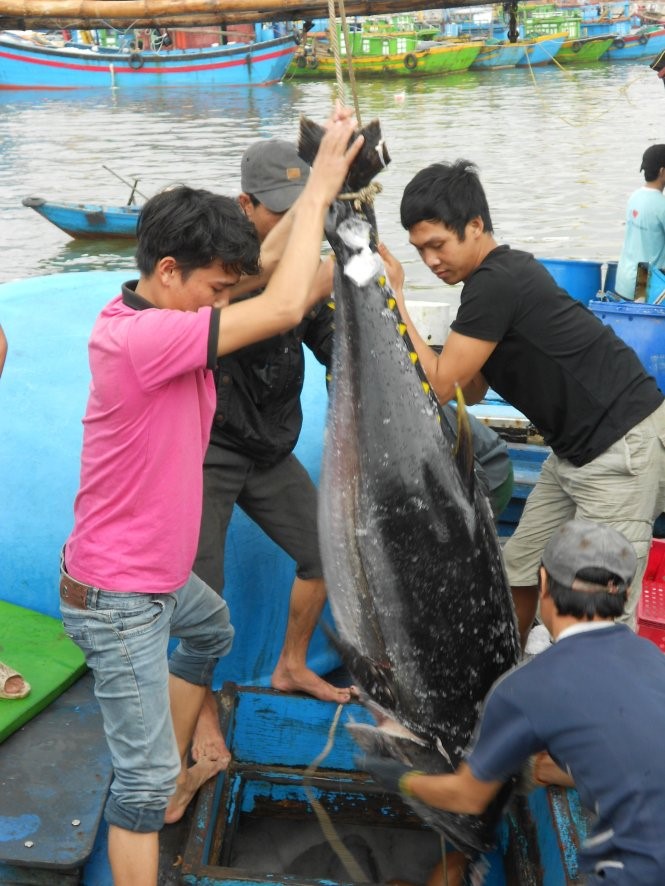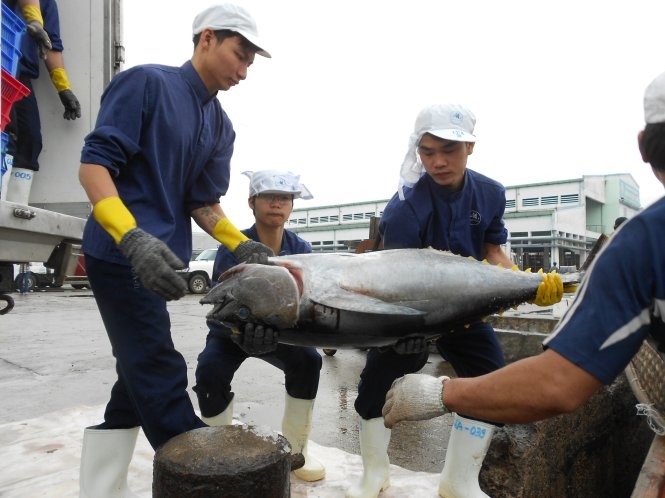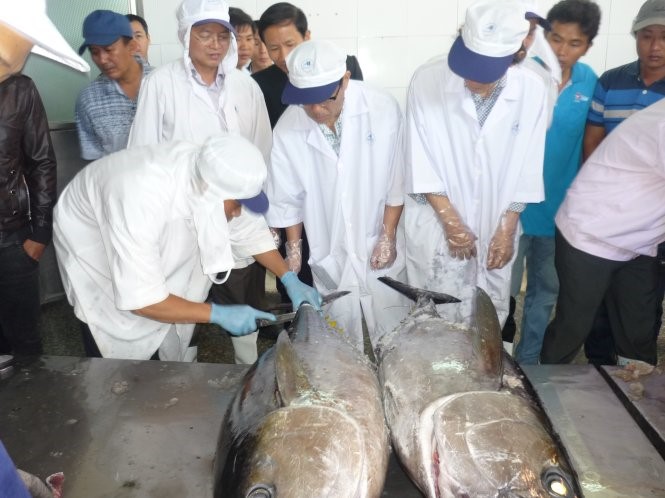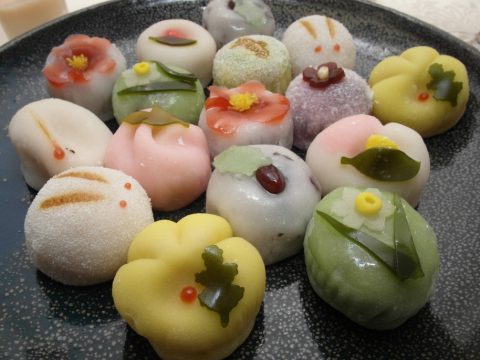The story of Vietnamese tuna and the help from Japanese fishing technology.
JAPANESE FOODS
26.09.2017
Vietnam is the world’s third largest exporter of tuna but the export value has remained modest mainly due to uneven production and a failure to match international standards. Tuna hold the highest value in the group of Vietnamese seafood exports, but in the past two years, Vietnam’s tuna exports have declined, according to the Vietnam Association of Seafood Exporters and Processors (VASEP).
Nine species of tuna can be found along the Vietnamese coastline, mainly offshore from the central and southeastern region. According to the Vietnam Tuna Association, there is a reserve of 50,000 tons of fish – 17,000 tons of sustainable fishing per year. The Ministry of Industry and Trade says tuna is one of the three top seafood currency earners along with catfish and shrimp. Currently, Vietnam has more than 2,500 vessels of various kinds engaged in tuna fishing, with an annual output of 10,000 tons. The central province of Phu Yen, the cradle of Vietnamese tuna fishing, has the biggest vessels. This year alone, Phu Yen fishermen have either built or upgraded hundreds of fishing boats. Fisherman Nguyen Dau is from Tuy Hoa city in Phu Yen ‘In the past, only fishermen in Phu Yen or Binh Dinh were involved in tuna fishing. The trade has now spread nationwide from the south to the north as it’s quite easy.’
Tuna exports are forecast to continue rising while exports of other seafood products are declining. Despite the strong growth of tuna fishing and processing, Vietnam still lacks a legal framework for the industry whose preservation, processing, and marketing have developed haphazardly. Vu Dinh Dap, President of the Vietnam Tuna Association, says ‘With such limitations, our export items will be constrained by host countries’ technical barriers because importers often require evidence of product origins or conditions of food safety. If we lack these documents, foreign partners can force us to sell our products at lower prices.’
In 2010, the Western and Central Pacific Fisheries Commission helped Vietnam implement a project on tuna fishing management focusing on two types of yellow fin tuna which are in danger of disappearing due to over – fishing. The project creates a scientific foundation for fishing management with the aim of making Vietnam an official member. Pham Trong Yen, Deputy Director of the Department of Science and Technology and International Cooperation and Relations under the General Department of Seafood says the membership will benefit both Vietnam and the Commission. Yen said ‘To date, Vietnam hasn’t got any specific legal framework for tuna fishing. Vietnam has participated in catching the fish but doesn’t have any set method of preserving them. This project has helped us survey Vietnam’s laws relating to tuna, based on which state management agencies will propose necessary changes’.
In past years, despite the increasing output of tuna fishing, little economic outcomes were recorded. Due to primitive fishing techniques, long periods at sea and poor preservation efficacy, there was only a negligible number of local tuna fulfilling export standards.
Since 2015, the Japanese-based Kato group has transferred its latest fishing equipment and technologies to the province and provided relevant training courses. As part of the transfer, a local fleet of 25 boats were equipped with automatic fishing rods and 130 fishermen received training. The shipment of the tunas, all of which were landed using new fishing and storaging technologies transferred from Japanese experts, marks the beginning of cooperation between Binh Dinh and Japan to improve the value of the local tuna-fishing sector.
The catch is fresher and of higher quality in comparison with previous batches, said Masakazu Shoga, a Japanese expert working for Kato Hitoshi General Office (Kato Office), the importer.
Of the total catch from the fleet’s latest sailing between January and April, 712 tuna fish or 29 tonnes were tested to meet requirements for export to Japan. However, only 28 fish or 1.2 tonnes were shipped to the country. Binh Dinh tuna often nets bidding prices ranging between 950 and 1,600 JPY (US$9 – US$15) per kg in Japan.
According to boat owners participating in the Kato project, local fishermen are yet to get used to Japanese fishing method and tools. Following the new techniques, they need to work harder and pay more for ice used for preservation.
Offshore fishing and long time taken to transport the catch onshore still represents an obstacle, as there is only one tuna auction mounted in Japan per month. Consequently, not many local fishermen are taking interest in exporting tuna.
Japanese experts said Vietnamese tuna has a beautiful skin colour but rather pale flesh, which does not match Japan’s consumer preference. This has resulted in the low export quantity.
Local authorities are working on these shortcomings to improve tuna quality and productivity for higher export volumes. Measures include making adjustments to Japanese tools suitable for fishing conditions in Vietnam and ensuring the transport duration is under nine days.
With new technic in fishing, also in prevention of tuna products, Vietnamese tuna will have more chance to export and increase the value in abroad market.

Workers are seen hoisting a tuna from a fishing boat’s freezing cellar.

Workers are pictured transporting a tuna to a freezer

Japanese experts are seen checking on the tuna caught by fishermen in the central province of Binh Dinh.





